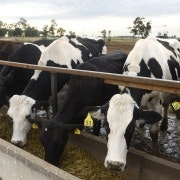BHP and Rio's high-water slide
The two big resource groups reported solid earnings this week, Rio Tinto for the full year and BHP Billiton for the December half. But whatever happened to the spectacular leaps in profits we've become accustomed to as the resource boom roars on?
The results were respectable rather than spectacular. Rio generated an underlying profit (before the result was marred by the latest, massive write-down of the value of its aluminium business) of $US15.5 billion, 11 per cent above its 2010 earnings. BHP reported an eight per cent increase in underlying earnings.
A year ago Rio's earnings more than doubled and its first-half earnings for 2011 were up 35 per cent.
What happened to the miners' growth rates was quite simple. Despite record levels of production and their continuing massive investments in expanding those production bases further, particularly in iron ore, the impact of the volume gains was severely blunted by the steep declines in prices that occurred towards the latter part of last year.
The key iron ore price, while on average through the year still higher than in 2010, ended the year about 25 per cent lower than it started. Base metal prices followed a not dissimilar path but also experienced turndowns in volume.
What the results suggest is not that the demand that has underpinned the remarkable structural surge in demand for resources that ignited the boom has fallen away, but rather that it appears to have plateaued.
There is volume growth but the prices that created windfall super-profits for the big producers have fallen back significantly, albeit to levels that by historical standards still have boom-like qualities to them.
The earnings of the big miners have been dramatically re-based during the boom but in the current conditions, despite the continuing expansion of their capacity, the market might have to get used to more conventional improvements in earnings, particularly as both Rio and BHP drew attention to the cost pressures they are experiencing.
That tapering off of their earnings growth rate may help explain why Treasury has apparently downgraded its expectations for the revenue it expects to be raised from the Minerals Resource Rent Tax even before the tax is in place.
It also provides the background for the more sombre tones adopted by Marius Kloppers and Tom Albanese and their flagging of a more cautious and probably stretched-out timetable for what were previously very ambitious and accelerating expansion programs.
The obvious reason for that relatively recently-adopted wariness is China, whose growth rate is slowing markedly.
Part of that relates to last year's efforts by the Chinese authorities to cool an over-heating property sector and keep some control over inflation (although the latest CPI numbers released this week suggest they still have some work to do).
The other major factor, of course, is the weakness of the global economy and, in particular, the crisis in the eurozone – China's biggest market – and the frailty of the US economy.
China's GDP growth is slowing and heading towards its lowest levels for more than a decade.
If one takes the view that resolving the structural issues and reducing the level of indebtedness within the eurozone is a program that, assuming that it can be done, will take a decade or more of austerity and also that, while the US is more dynamic, it will take years to bring its debt and deficits down to more sustainable levels, there would be no reason to believe that demand from China and other developing nations is suddenly going to go back to double-digit rates.
The sheer size of the base level of demand – China's economy has grown by more than 40 per cent in the past three years alone – will underwrite volume growth in commodities for the next few years at least.
With a delayed avalanche of new production nearing the market – supply delayed by the global financial crisis – there is no obvious reason to expect prices to rebound and shoot back to the record levels experienced earlier last year.
With their cash flows retreating from the high-water marks achieved in the first half of 2010 – as noted yesterday BHP's cash flow run rate in its first half was nearly a third lower than it was in the second half of the 2010-2011 financial year – the big miners will be more cautious and their results are likely to be driven largely by volume growth rather than the heady mix of both strong volume growth and soaring prices that fuelled their earnings peaks.
















